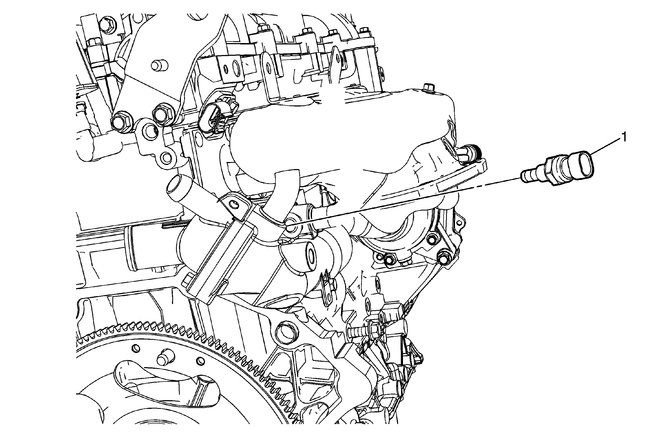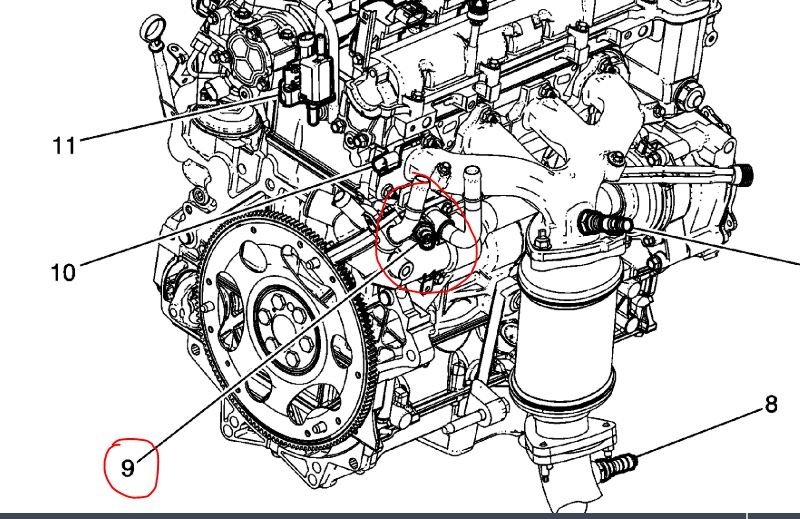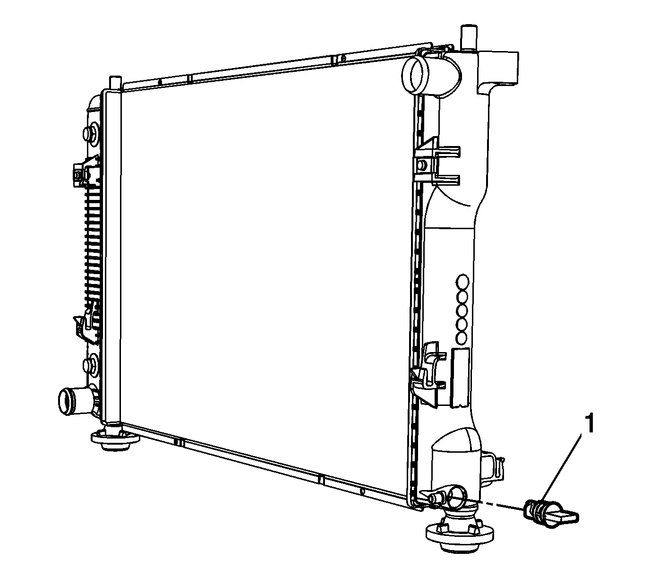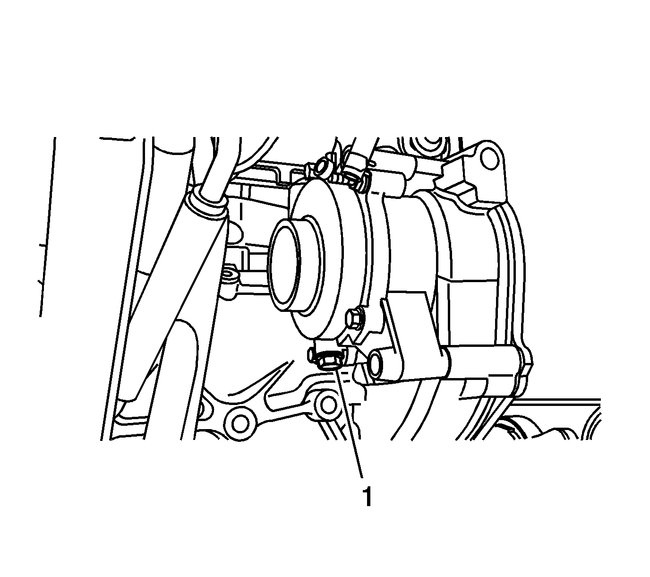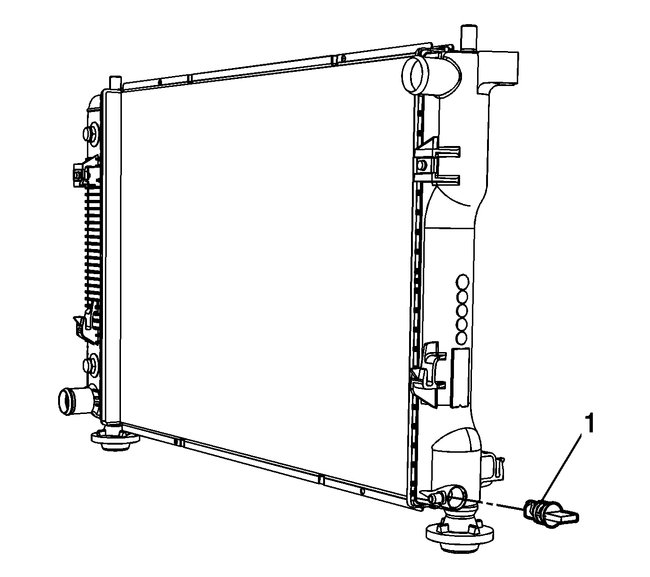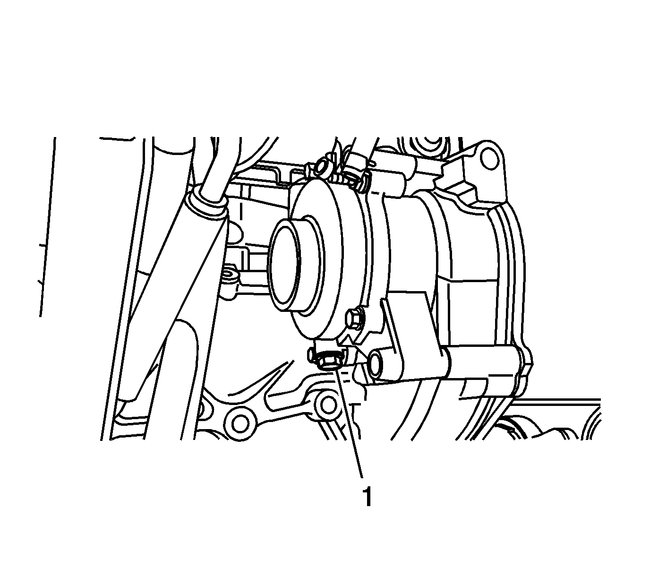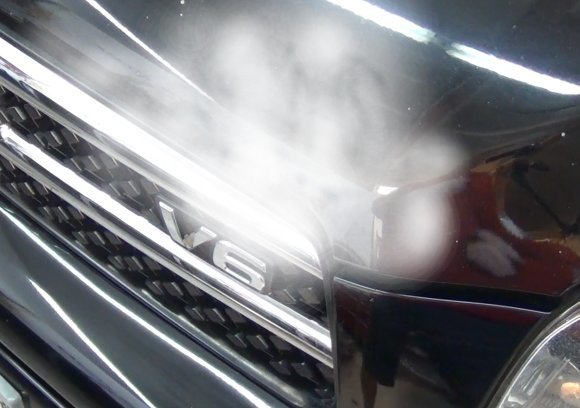Welcome back:
It sounds like you have a faulty engine coolant temperature sensor (ECT). Here is a link that explains how in general one is replaced:
https://www.2carpros.com/articles/coolant-temperature-sensor-cts-replacement
I attached a picture of where yours is located. I circled the sensor on the second pic. You will have to drain the coolant from the vehicle or it will leak when you remove the sensor. I have to be honest, if it doesn't see like the engine is actually overheating, this is my first suspect.
Here are the directions for draining and refilling the cooling system. The attached pics correlate with the directions.
__________________________________
Draining Procedure
Warning
To avoid being burned, do not remove the radiator cap or surge tank cap while the engine is hot. The cooling system will release scalding fluid and steam under pressure if radiator cap or surge tank cap is removed while the engine and radiator are still hot.
1. Remove the coolant pressure cap from the radiator surge tank.
2. Raise and support the vehicle. Refer to Lifting and Jacking the Vehicle See: Vehicle Lifting > Procedures > Lifting and Jacking the Vehicle.
3. Place a drain pan under the drain cock.
pic 3
4. Loosen the radiator drain cock.
5. Drain the cooling system.
6. If a complete block drain is required, place a drain pan under the water pump drain.
pic 4
7. Remove the water pump drain plug.
8. Drain the cooling system.
9. Inspect the coolant.
10. Follow the appropriate procedure based on the condition of the coolant.
* Normal in appearance-Follow the filling procedure.
* Discolored-Follow the flush procedure. Refer to Flushing See: Cooling System > Procedures > Flushing.
Filling Procedure
Caution:
The procedure below must be followed. Improper coolant level could result in a low or high coolant level condition, causing engine damage.
pic 5
Caution:
Refer to Fastener Caution See: Vehicle > Technician Safety Information > Fastener Caution.
1. Tighten the radiator drain cock to 2 Nm (18 lb in).
pic 6
2. Install the water pump drain plug and tighten to 10 Nm (89 lb in) if removed during the draining process.
3. Lower the vehicle.
4. Remove radiator inlet hose at the engine. Refer to Radiator Inlet Hose Replacement (LEA) See: Radiator Hose > Removal and ReplacementRadiator Inlet Hose Replacement (LF1 or LFW) See: Radiator Hose > Removal and Replacement
Note:
Use a 50/50 mixture of DEX-COOL antifreeze and clean drinkable water.
5. Slowly add mixture of 50/50 DEX-COOL antifreeze and clean, drinkable water to the engine and radiator. Fill the cooling system as indicated below:
* When the engine block is not drained, add 1.75 liters (1.85 qts) to the radiator through the radiator inlet hose.
* When the engine block is drained, add 2.0 liters (2.1 qts) to the engine, then add 1.75 liters (1.85 qts) to the radiator through the radiator inlet hose.
6. Install the radiator inlet hose at the engine. Refer to Radiator Inlet Hose Replacement (LEA) See: Radiator Hose > Removal and ReplacementRadiator Inlet Hose Replacement (LF1 or LFW) See: Radiator Hose > Removal and Replacement
7. Slowly add mixture of 50/50 DEX-COOL antifreeze and clean, drinkable water to the surge tank until the coolant level reaches the base of the radiator surge tank. Refer to Approximate Fluid Capacities See: Fluids
8. Start the engine and check for leaks.
9. Run the engine and cycle the vehicle from idle to 3,000 RPM in 30 second intervals until the engine cooling fan comes ON, the engine cooling fan turns ON at approximately 102°C (216°F). Repeat this process twice before the engine is turned OFF.
10. Return the engine to idle, and idle for 30 seconds, then turn the engine OFF.
11. Allow the vehicle to cool, before adding additional coolant.
Note:
The level in the surge tank will return into the cold fill range once the vehicle cools.
12. Add additional coolant to the surge tank until the level is approximately 13 mm (0.5 in) above the surge tank seam.
13. Install the coolant surge tank cap.
_________________________________________
I hope this helps. Let me know if you need anything and how things turn out for you. Note. You only have to drain the engine coolant until the level in the radiator is below the height of the sensor.
Take care,
Joe
Images (Click to make bigger)
Thursday, July 1st, 2021 AT 1:03 PM
